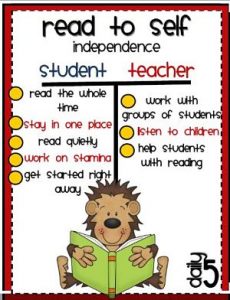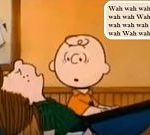We Comprehend and Connect.
 We are readers who comprehend and connect. We will practice Reading to Self – to read independently for up to 30 minutes. During this time, we can work with students individually or in small groups.
We are readers who comprehend and connect. We will practice Reading to Self – to read independently for up to 30 minutes. During this time, we can work with students individually or in small groups.
 We will discuss the strategies that good readers use as they read to help them understand the text better. They are always thinking about what they are reading. If not, then it’s just like hearing sounds but not actively listening (like Charlie Brown in school). Here are a few reading strategies:
We will discuss the strategies that good readers use as they read to help them understand the text better. They are always thinking about what they are reading. If not, then it’s just like hearing sounds but not actively listening (like Charlie Brown in school). Here are a few reading strategies:
- make connections to what they are reading: text to self (reminds them of something they have experienced), text to text (reminds them of another book, or text to world (reminds them of something in the world) and empathize with the characters
- make predictions: guess what will happen next
- ask questions
- visualize: make a movie in their mind
- metacognition: thinking about their thinking; to have an awareness and understanding of their own thinking
Here are the curricular competencies from BC’s Curriculum – English Language Arts (reading, listening, and viewing): Grade 3
Using oral, written, visual, and digital texts, students are expected individually and collaboratively to be able to:
Comprehend and connect (reading, listening, viewing)
- Read fluently at grade level
- Use sources of information and prior knowledge to make meaning
- Use developmentally appropriate reading, listening, and viewing strategies to make meaning
- Recognize how different text structures reflect different purposes.
- Engage actively as listeners, viewers, and readers, as appropriate, to develop understanding of self, identity, and community
- Demonstrate awareness of the role that story plays in personal, family, and community identity
- Use personal experience and knowledge to connect to stories and other texts to make meaning
- Recognize the structure and elements of story
- Show awareness of how story in First Peoples cultures connects people to family and community